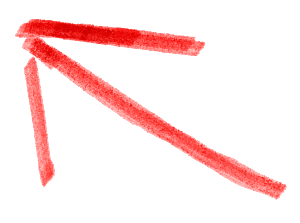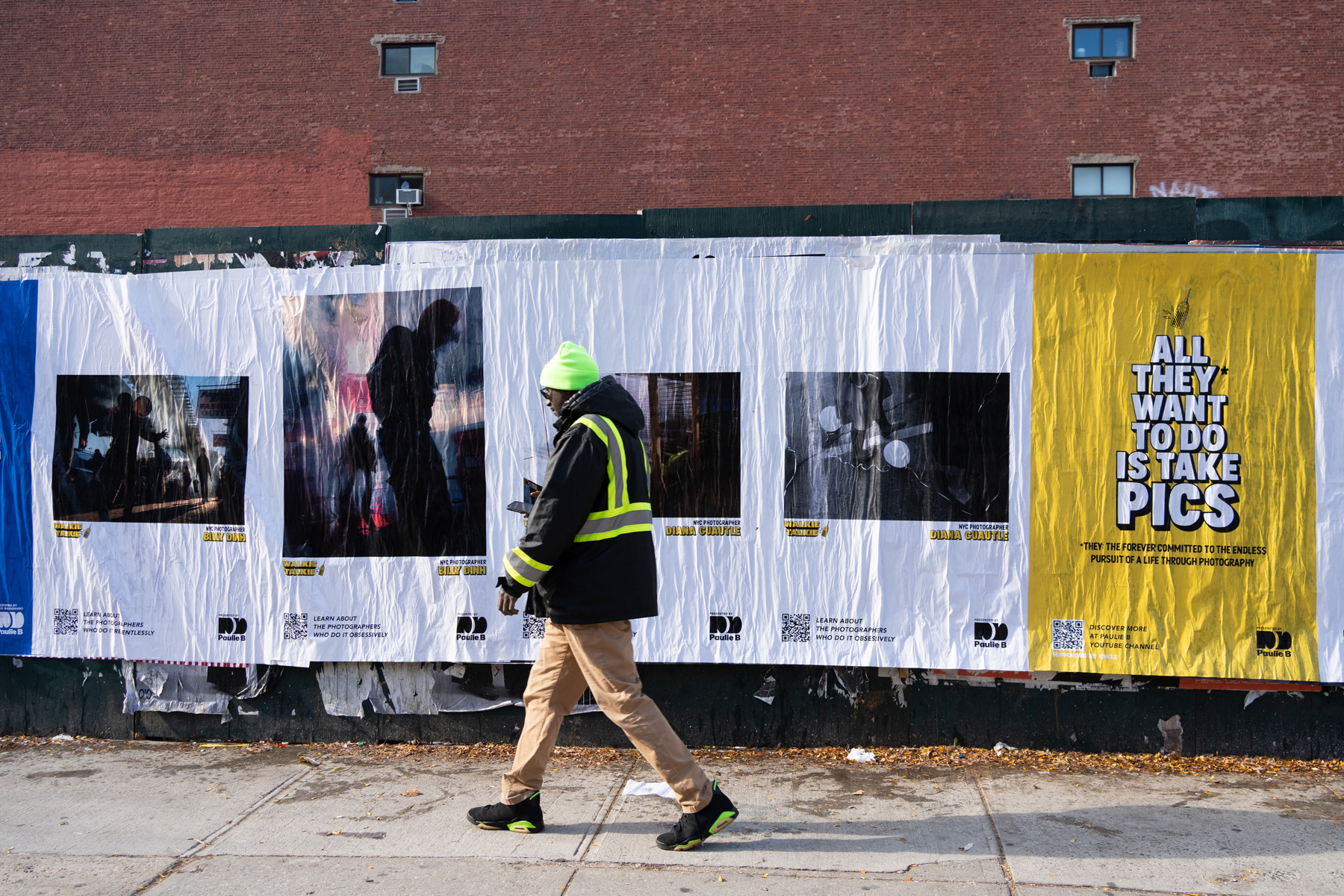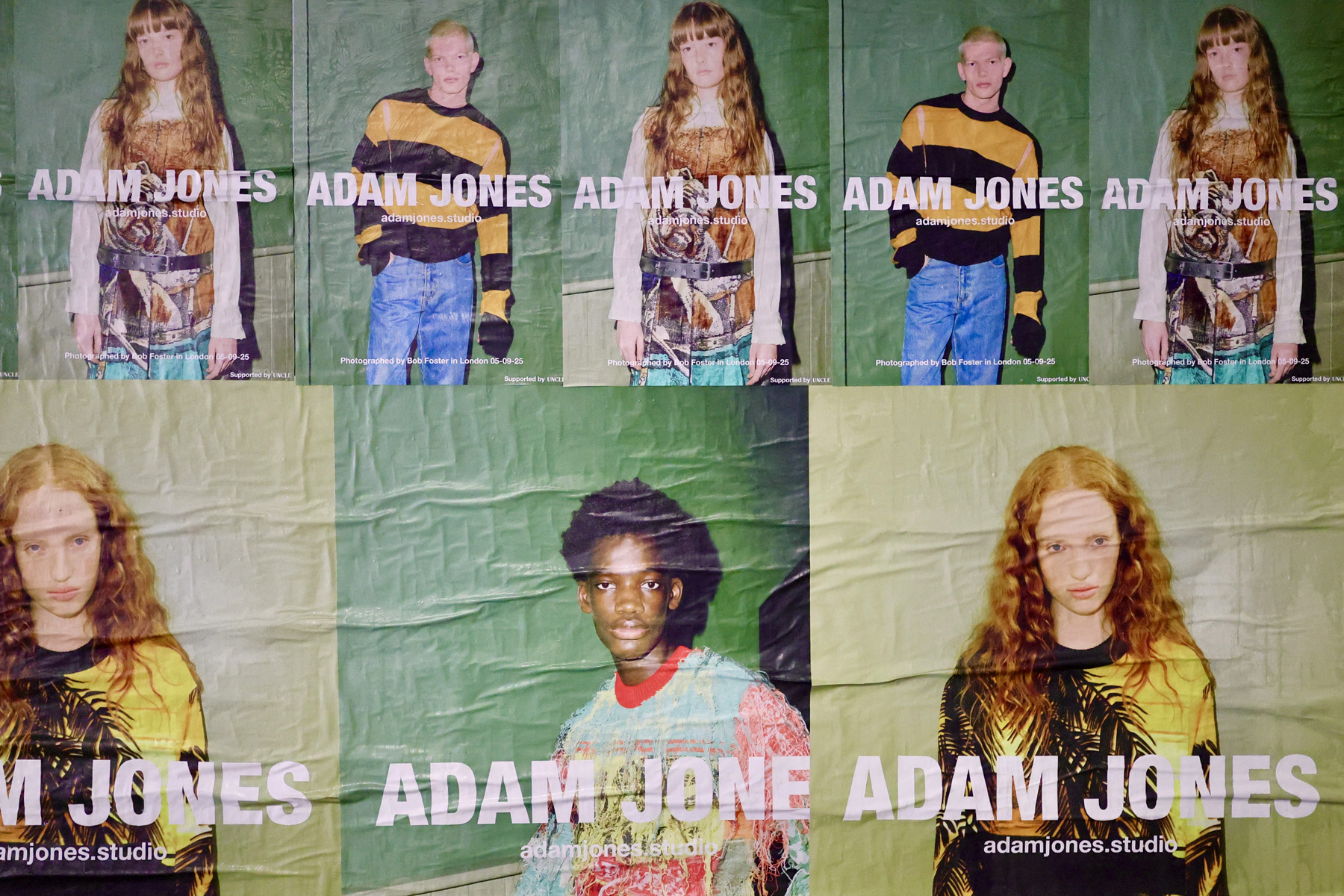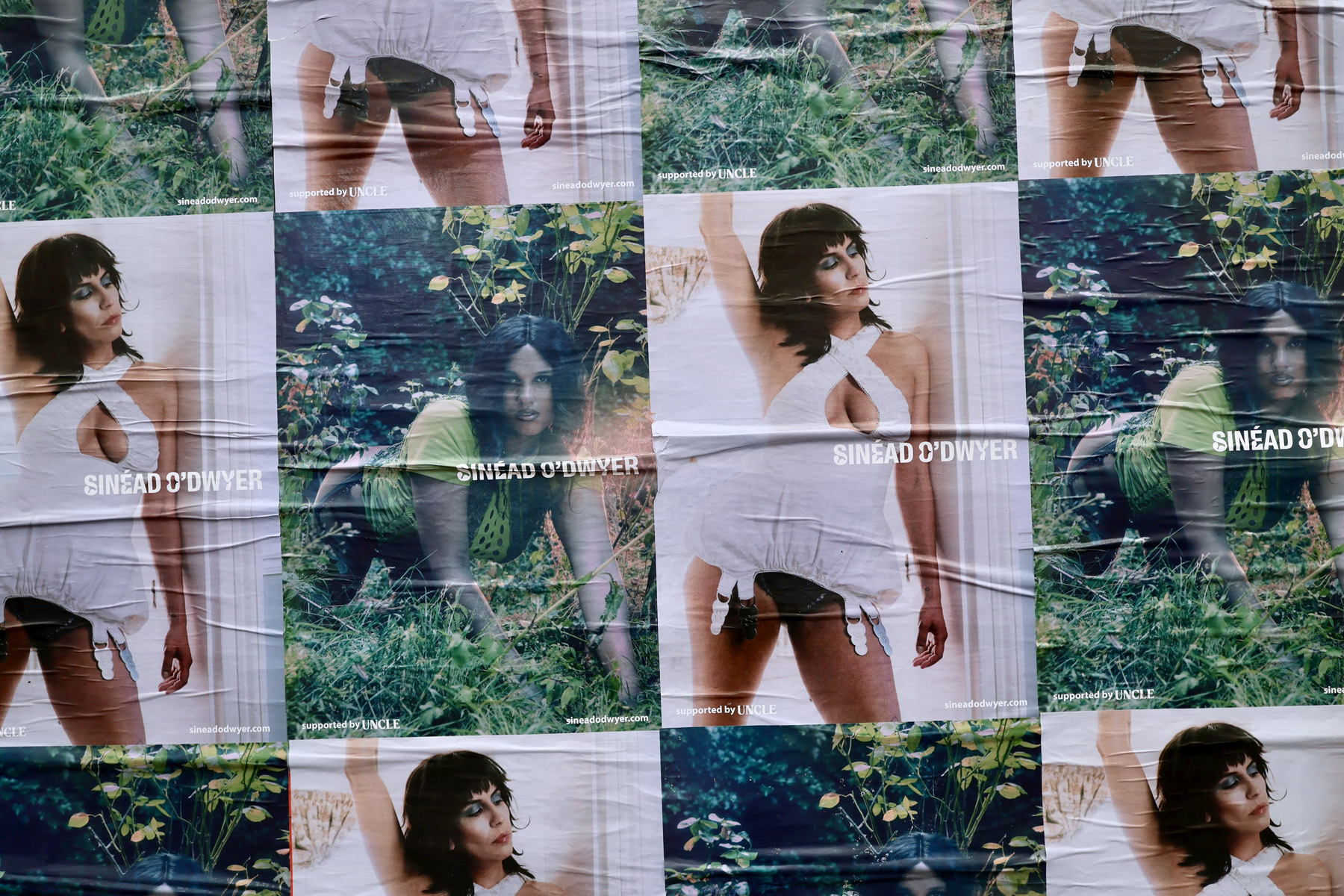
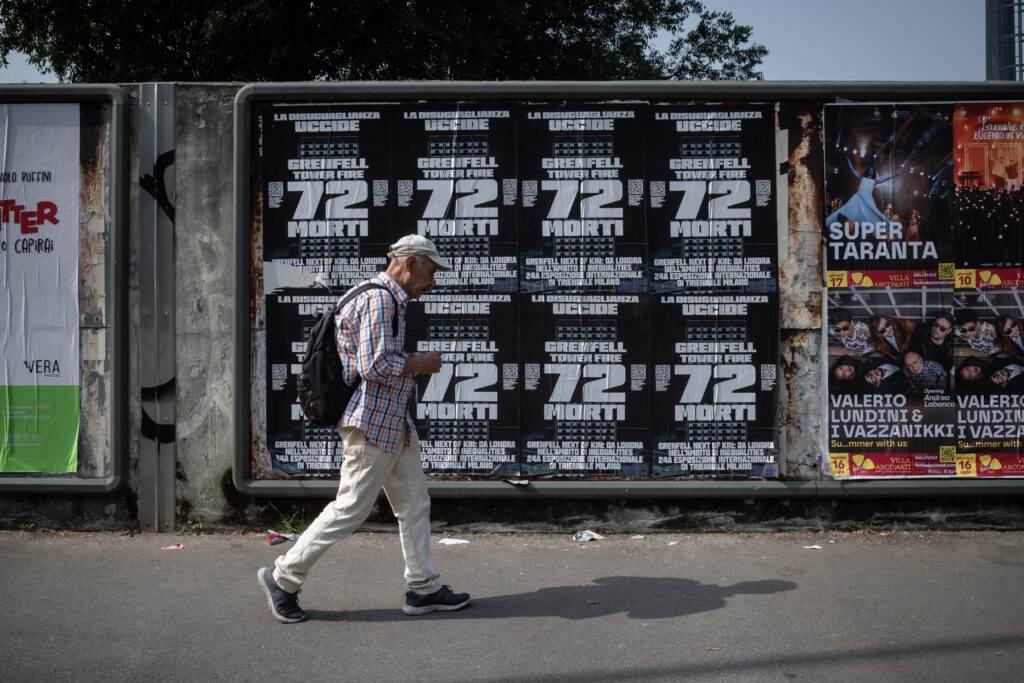
This is Grenfell, 8 years on from the tragedy that claimed the lives of 72 and exposed the brutal failures of system that puts profit before people. With its demolition imminent, what remains is a symbol of state neglect, deregulation, and the violence of inequality. Despite countless promises, no one has yet been held criminally accountable, leaving grieving families left looking for closure in the shadows of Grenfell.
“The tragedy makes visible so many aspects of what has gone wrong in our society in my lifetime thanks to neoliberal capitalist ideas, the privatisation of space and housing, the undermining and demonising of social housing and its tenants, the plight of working class people, immigrants and refugees in this system, the lack of care and hollowing out of local democracy, the deregulation that allows harm to be put in all our way for the sake of greater profits for large global corporations, and the opaque lack of accountability that comes with all of that.
Noel Douglas was there the morning after the fire. Since then, he has been heavily involved with the Grenfell Next of Kin community, helping to apply pressure on those who have spent the last 8 years dodging responsibility. His work amplifies the fight for justice, whether that be on the streets through flyposting and augmented reality billboards, online via social media, or on a gallery wall within the Triennale Milano’s ‘Inequalities’ International Exhibition.
UNCLE spoke with Noel, on behalf of Next of Kin, to talk about political resistance and cultural critique, Grenfell’s ties to Milan, and why the streets are still the most important gallery we’ve got.
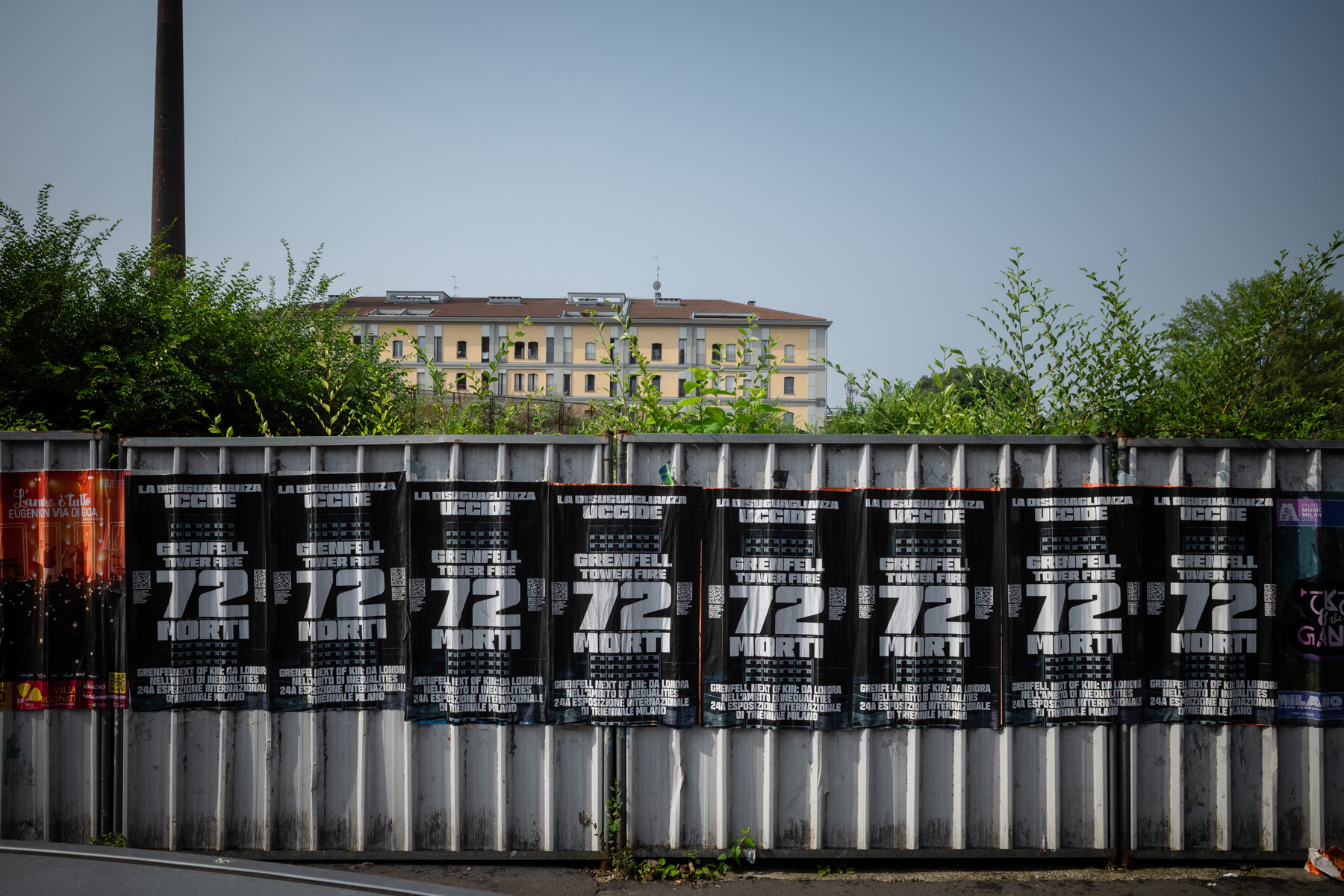
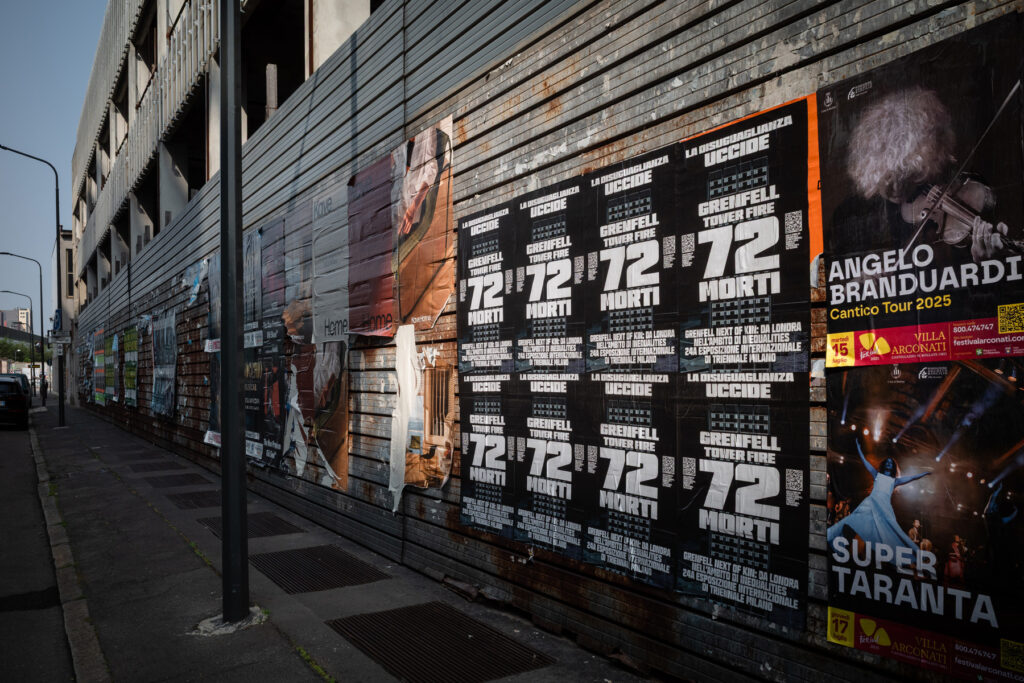
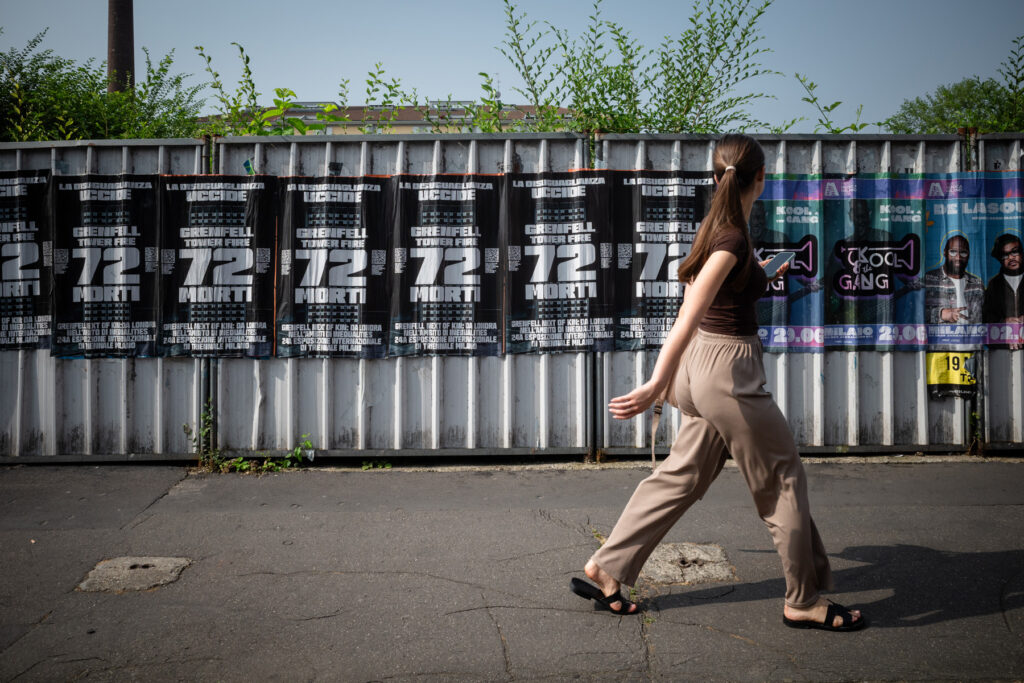
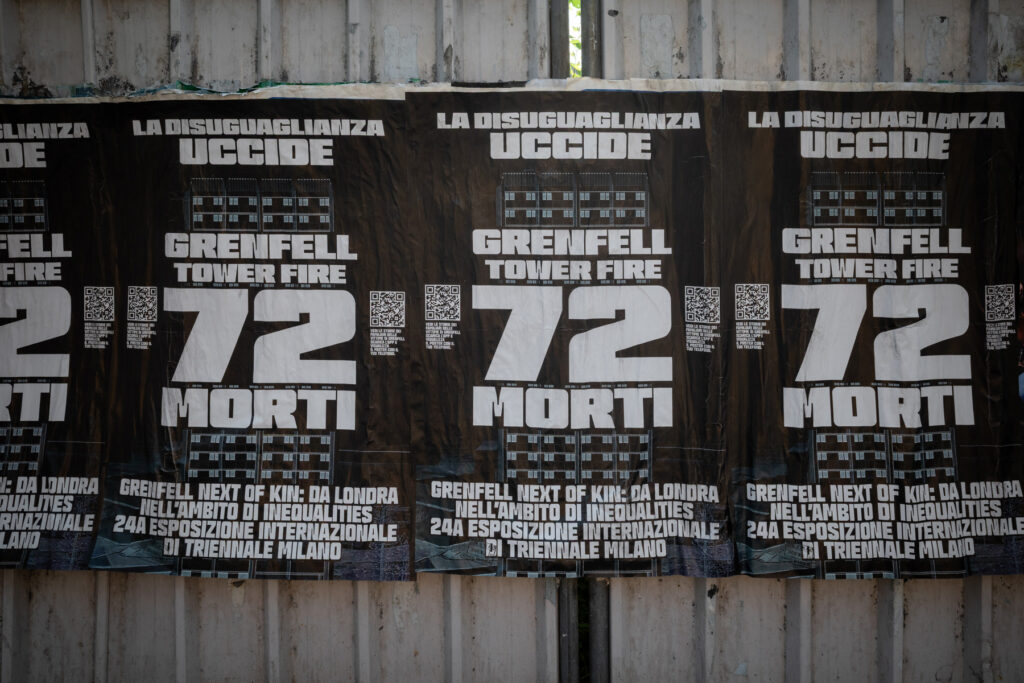
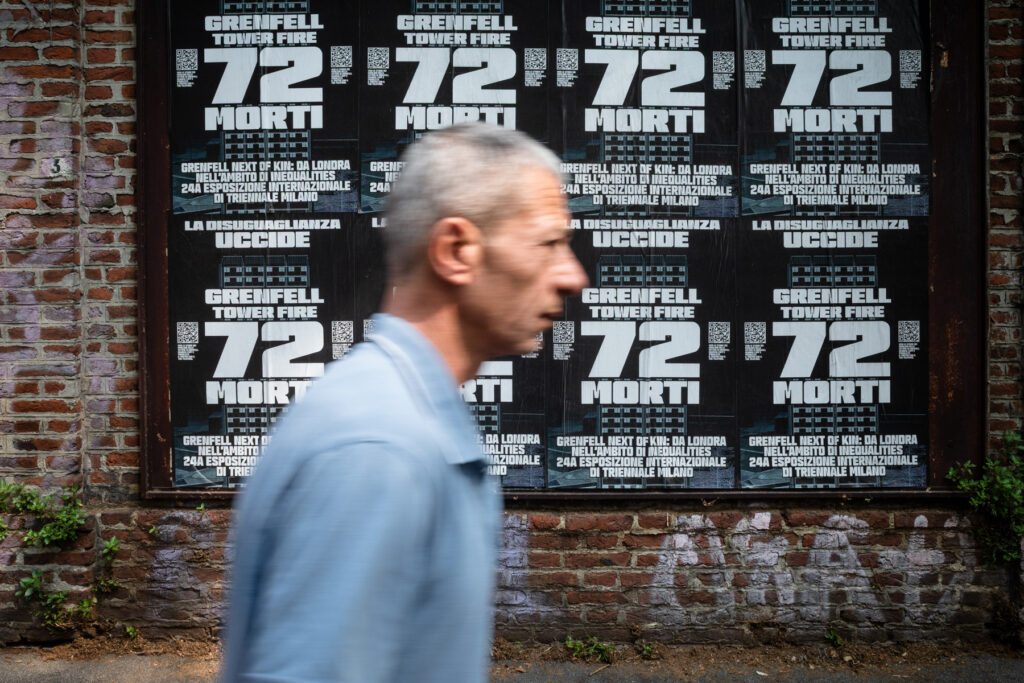
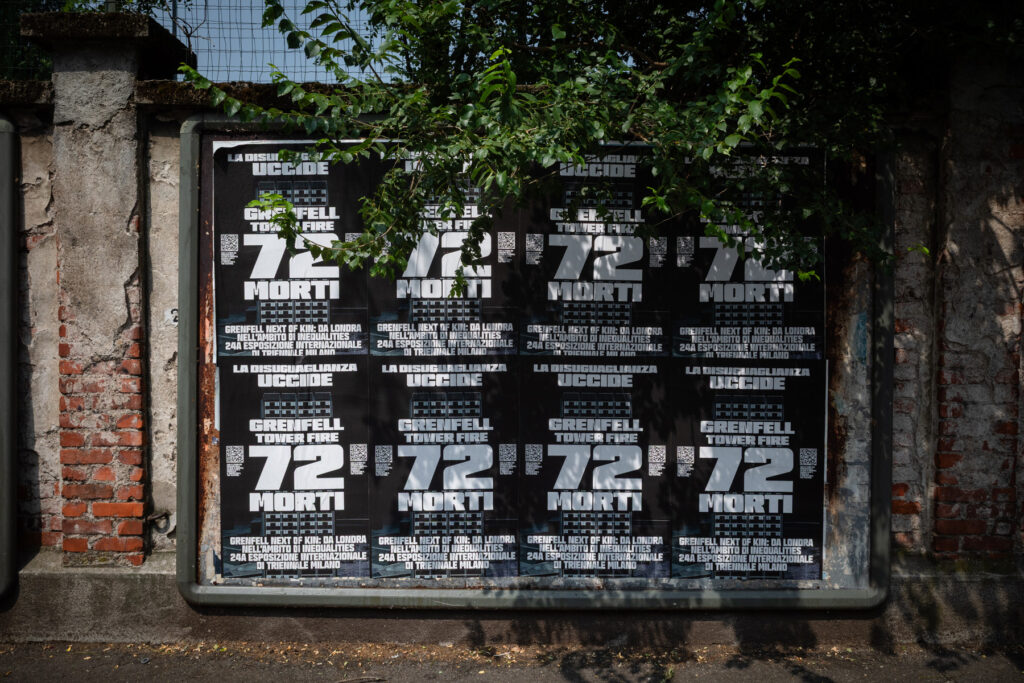
I come from a single parent, working class background, at the time in the 80s in Thatcher’s Britain this meant being about as poor as you can be because, just like now, poor single parents were scapegoated as underserving, which is where I think my anger at injustice comes from, as I can remember being young and not thinking it was fair that some people had lots and others, like me, nothing. Then when I went to college I met activists and started to read and learn for myself about working class history and the history of revolutionary left wing movements for the first time and it was so inspiring, I could start to make sense of why we lived in a Capitalist system that treated people like this, and more importantly what we could do to change it. I studied conceptual Fine Art at BA and then went on to a Design Masters at the Royal College of Art in London, all on full grants, so I was lucky I caught the tail end of the free education system in the UK, another victim of privatisation, now of course, someone from my background would not be able to do this without getting into a huge debt, if they even got there in the first place, which is completely wrong and makes me very angry too which is why I support charities like Arts Emergency that support and mentor working class kids wanting to be artists and designers. As I went through my studies the insights I gained from reading and activism helped me to align my creativity with my politics.
CAN YOU EXPLAIN THE IMPORTANCE OF ART IN THE CONTEXT OF SHAPING POLITICAL DISCOURSE AND CHALLENGING TOPICS SUCH AS SOCIAL JUSTICE AND INEQUALITY?
Art in its truest sense is about connecting with others and moving them emotionally to shift the imagination and see the world anew. Artists of course need to be free from being forced to say a particular thing, or hold a particular political line, but in the context of how I work it’s important for me that the work engages with what is going on in the world, especially as it seems that we are now in an era where life on Earth itself is threatened by the logic of profit for profits sake and the effects of that such as War and Climate Emergency, so I want use my work as a weapon of struggle. By creating what I call ‘radical spectacles’ in popular culture we can help shift attitudes and perceptions, US-based artist-activist Stephen Duncombe calls this using ‘AEffect’, a blending of ‘affect’, the ability to move some emotionally with ‘effect’, the ability to move things politically, or as he describes as it, using ‘emotionally engaging and creatively crafted experiences to create meaningful political change, blending the heart and the mind in activism’.
WHETHER IT BE FLYPOSTING, BILLBOARDS, DIGITAL SCREENS OR LED VANS, A LOT OF THE WORK THAT YOU DO ENDS UP IN THE STREETS AND IN THE PUBLIC SPHERE. CAN YOU TELL US ABOUT YOUR RELATIONSHIP WITH STREET ART, AND THE IMPORTANCE OF IT?
I think the street and public space is a vital and needs to be used, no one can ultimately stop us from doing this, it’s our space! I see the whole urban environment as place to intervene, through whatever appropriate medium. As people’s attention has shifted online in the past twenty years the city space and street has become far too underused as well, which ironically I think help explains the surge in interest of Street Art, but the lesson of Street Art is to get out and do it yourself not carve a Banksy stencil out of a wall and sell it at auction! In politics of course protests, blockades, occupations and Revolution’s themselves all happen in the street and the public city space, so it’s important to use the space we live in everyday that surrounds us, I’m always happy to show in galleries and museums, but the street space is where life is. A great example of this is a few years ago I met with street artists in Cairo, who during the revolution there came out on to the streets to paint the walls with the most amazing murals, they did this everyday, they described how the walls became like newspapers and they would often have audiences around them of thousands of people. These murals were so powerful, an amazing book written about them called ‘Walls of Freedom’ is banned in Egypt to this day. Now it’s not everyday we can be in the middle of an active revolution but we can still act and in so doing, like with demonstrations, we rehearse for the bigger change to come, by proclaiming our demands and voicing our resistance to the world as it currently is, we show what could be possible and also give confidence to people that they aren’t alone in wanting to see a better world and creativity in all its forms has a massive role to play in all this.
CAN YOU TALK ABOUT HOW YOU BECAME INVOLVED WITH THE GRENFELL NEXT OF KIN GROUP?
I live locally to Grenfell, and went down the morning after the fire to what was quite obviously as shocking and horrific scene. The tragedy makes visible so many aspects of what has gone wrong in our society in my lifetime thanks to neoliberal capitalist ideas, the privatisation of space and housing, the undermining and demonising of social housing and it’s tenants, the plight of working class people, immigrants and refugees in this system, the lack of care and hollowing out of local democracy, the deregulation that allows harm to be put in all our way for the sake of greater profits for large global corporations, and the opaque lack of accountability that comes with all of that. As time went on and no justice seemed to be in sight, I thought I needed to try help in some way, as being local I think it’s important to connect with where you are and not just over larger global issues. As I was thinking this Kimia from Grenfell Next of Kin got in touch with me over Twitter to ask if I could help out, explaining Grenfell Next of Kin was about half the Next of Kin who had started to organise themselves as they were unhappy with what had happened so far, and so we got together and started to work on campaign ideas.
HOW DO YOU NAVIGATE THE TENSION BETWEEN VISIBILITY AND SENSITIVITY WHEN WORKING WITH THE GRENFELL NEXT OF KIN?
It’s not without its problems, everything I do is in conjunction with the Grenfell Next of Kin group, but of course with such a traumatic experience for the survivors and bereaved we have to be aware of what we show and do-for instance I don’t gratuitously use images of the burning tower- but at the same time we want to publicise and keep the tragedy in public memory, so really the main audience is the public meaning we don’t avoid some of the more hard hitting aspects. For instance my initial work for Grenfell Next of Kin was to make some social media video clips from edits from the inquiry, where because the inquiry room had a blue background we had the idea to key in short clips of footage of the burning tower behind the who we saw as the guilty parties responsible as they spoke to the inquiry, and then key in images of 72 victims behind the prosecuting QC’s questioning the those people.
On various posters I have made I’ve included augmented reality layers viewable through the phone that also draw on work like these video clips of the inquiry, layering them over the text based poster messages, it’s what I call an ‘expanded poster’, the idea here is that in the main, augmented reality technology is seen as a way to put ads in our vision field, ads for products attempt to take us alway from reality to an imagined future where we have purchased the product, in our imagination, in my use the augmented reality brings reality closer, in this case bringing key moments of the inquiry tucked away online in lengthy YouTube videos to your phone screen montaging them with the poster’s words. Finally in terms of the graphic design choices, I choose the black and white mainly text based identity with a strong bold typeface, so in an ad space context it creates a clear contrast to the colourful advertising, and the dominance of the black also references that it’s a form of memorial and remembrance, and the bold type signifies strength of the next of kin in their battle messages.
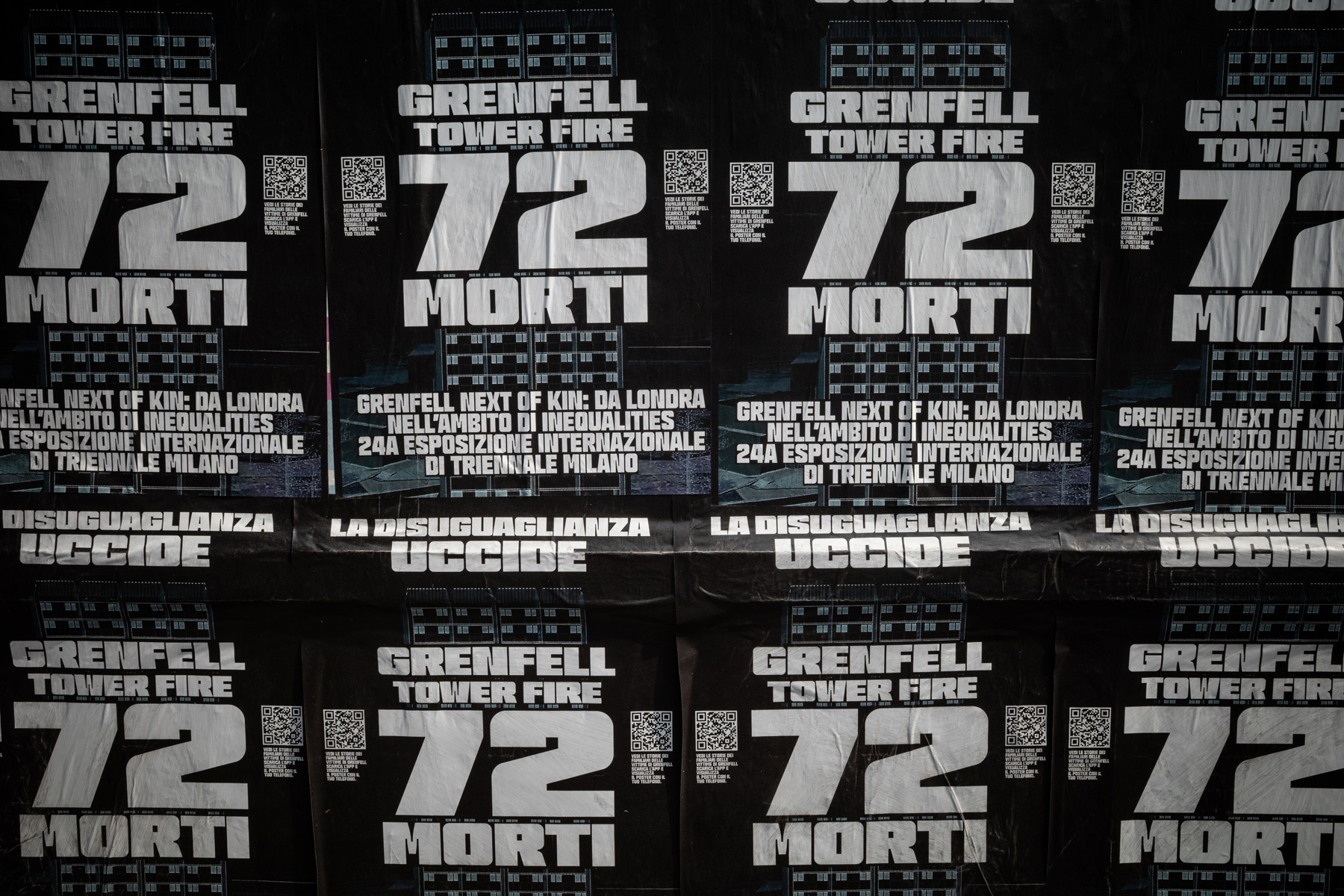
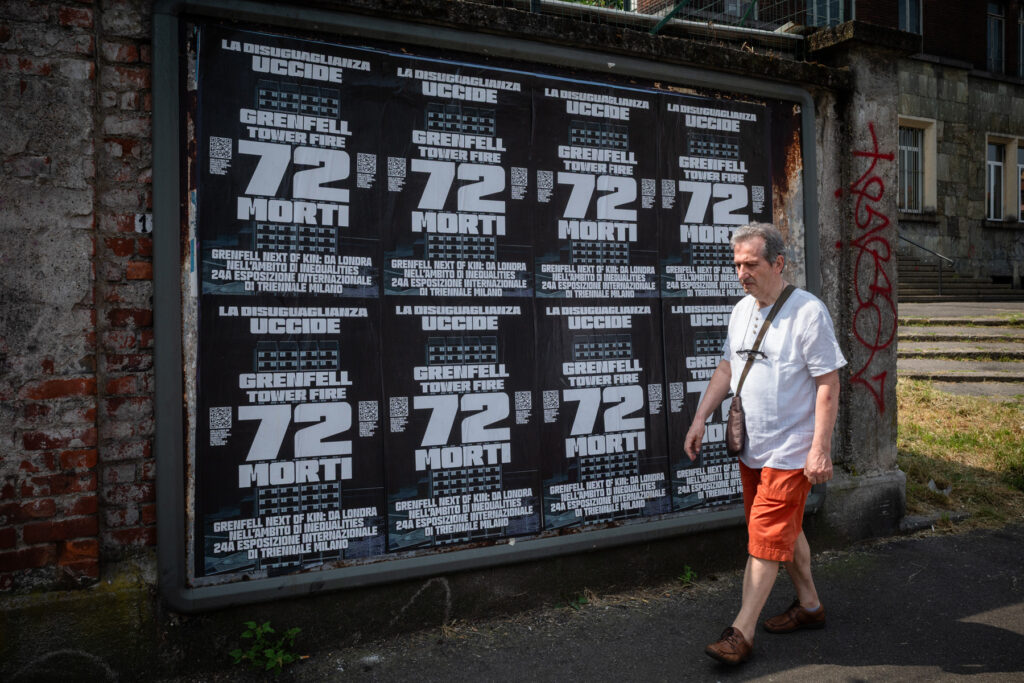
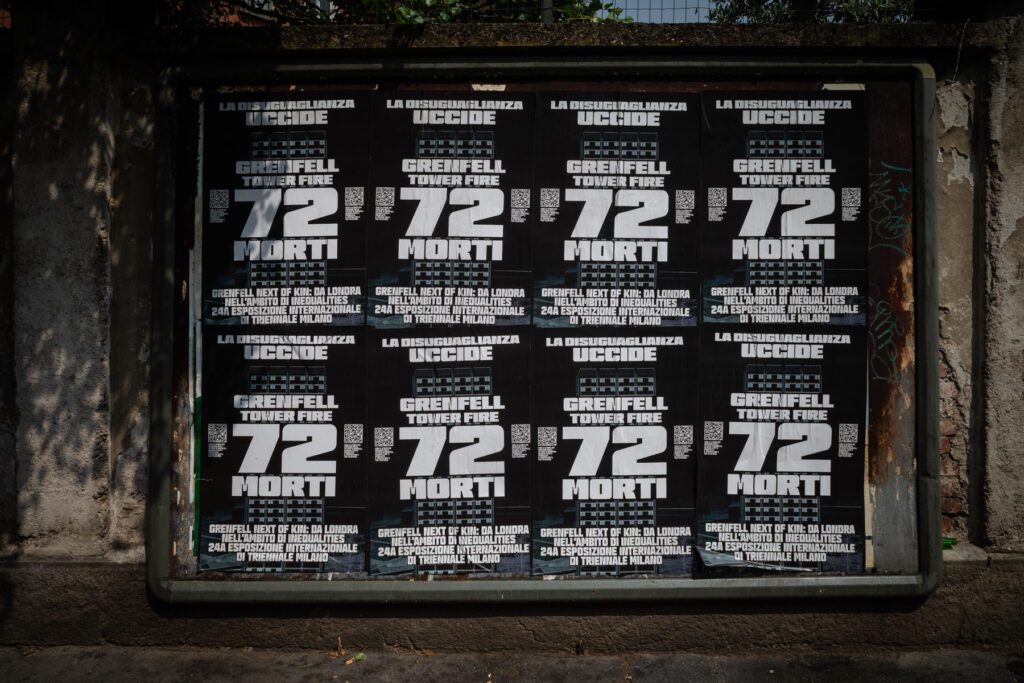

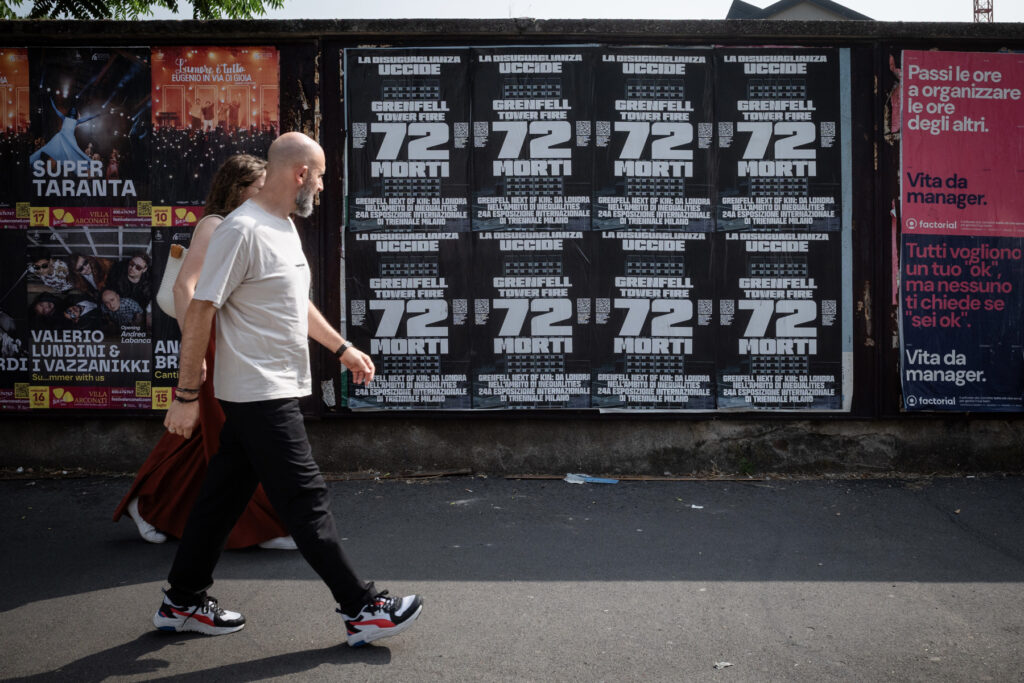
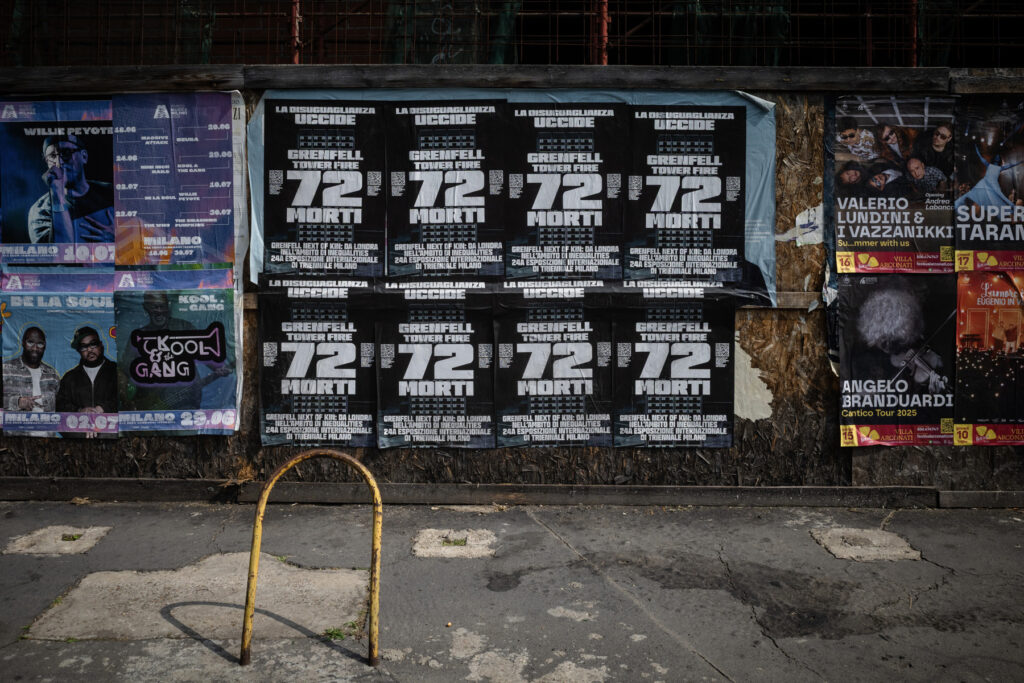
I’ve had a great response from people who see the work, whether in talks I give, online or at events like the Triennale. I see it as an ongoing process so its not about one thing getting lots of attention (thought that would be fine too!), but the cumulative result that comes from a body of work over time which fits with more broadly with my political artistic design practice. I think it’s important to create media images from the work, with the hope is that over time images of what is done also circulate as part of the visual culture we live in, for example when you search ‘Grenfell’ online, I hope that the images will come up as part of the search results, so the messages of the work live on this way.
IN YOUR OPINION, WHAT MAKES A PIECE OF POLITICAL GRAPHIC DESIGN EFFECTIVE TODAY? AND HOW DO YOU CUT THROUGH THE NOISE IN A WORLD DOMINATED BY SHORT-ATTENTION SPANS AND SOCIAL MEDIA?
I think it’s almost impossible to say what makes effective piece of work today, the main thing is to make it, get it out and see what happens, the tools have never been more available and opportunities to broadcast it out are there. One thing I think is vital, or gives work more chance of cutting through is for artists and designers to be activists and actually connected with political and social struggles, rather than seeing this sort of work as some kind one off for charity every now and then, when work is connected in this way the image has more chance of becoming a symbol of the struggle, propelled into the world by the social forces it represents..
IT WAS ANNOUNCED EARLIER THIS YEAR THAT GRENFELL WILL BE DEMOLISHED, AND A MEMORIAL BUILT IN ITS PLACE. WHAT IS THE GENERAL CONSENSUS OF THE GRENFELL NEXT OF KIN IN REGARD TO THIS? WHAT WOULD YOU LIKE TO SEE HAPPEN TO THE GRENFELL SITE?
The main problem with the tower as it is; it’s becoming unsafe, so regardless of any other discussions this is the most important factor in it coming down as we all don’t want some other tragedy to happen. In terms of the space the main demand is for the height to be maintained in some physical way and for whatever memorial there is there to be permanent and not something that can be taken away at a later date, what shape that may take is still an ongoing discussion. But the main worry is that the land will be used for something else and not to remember the tragedy.
CAN YOU TELL US A LITTLE BIT ABOUT THE TRIENNALE MILANO? ‘INEQUALITY’ IS THE THEME FOR THE TRIENNALE’S 24TH INTERNATIONAL EXHIBITION (ON UNTIL NOVEMBER 9TH, 2025) AND THERE IS A SECTION DEDICATED TO GRENFELL. WHAT IS MILAN’S HISTORY WITH THE GRENFELL FIRE?
The connection with Milan came a couple of ways. Firstly after the Torre Dei Moro tower fire, a few people from Grenfell Next Of kin came out to show solidarity and to meet the Italians made homeless by this fire caused by the same cladding as Grenfell, and secondly there’s a connection with Triennale President Stefano Boeri, because in 2021 the Tory government in the UK announced without warning that Grenfell tower was to be demolished, in response one of the Next of Kin who had lost a baby in the tragedy, had the idea for a proposal for a flower tower as a Grenfell memorial using the remains of the tower and planting 72 species of plants and flowers on it, making it bloom like a vertical garden, this was influenced by Stefano’s work in Milan on the Vertical Bosco towers, and Stefano kindly rendered an image of the proposal for a poster we made to push back against the Tory demolition plan.
DO YOU THINK EXHIBITIONS LIKE THIS CAN HELP TO PUT PRESSURE ON INSTITUTIONS AND GOVERNMENTS? OR IS THE EFFECT MORE SYMBOLIC?
We are living is a world of increasing inequality that is exacerbating all other problems and giving rise to fascism and hatred of others. Any platform that allows us to think about this, discuss it and encourage action to change it is a good thing. Of course we shouldn’t be naive about the role institutions can play in maintaining the status quo, and the way they can often exclude people, have difficult histories entwined with the legacies of Colonialism and Imperialism and all sorts of other problems, but similarly we shouldn’t discount the space and it’s public function especially in democratic societies like ours-however weakened they’ve become-where these types of spaces are still generally liberal and open in ways they aren’t in other countries.
WHAT IS YOUR HOPE FOR THE FUTURE OF GRENFELL AND THOSE INVOLVED?
That we get justice for the 72, that the people responsible are held properly to account, that we change the law around flammable cladding being used around the world and that by being part of what we hope will be a successful struggle for justice we move society toward a more equitable, peaceful and just future.
https://www.noeldouglas.net/




